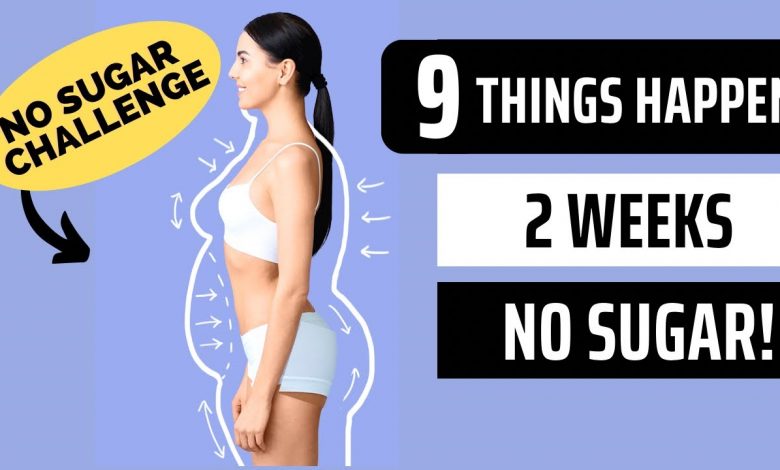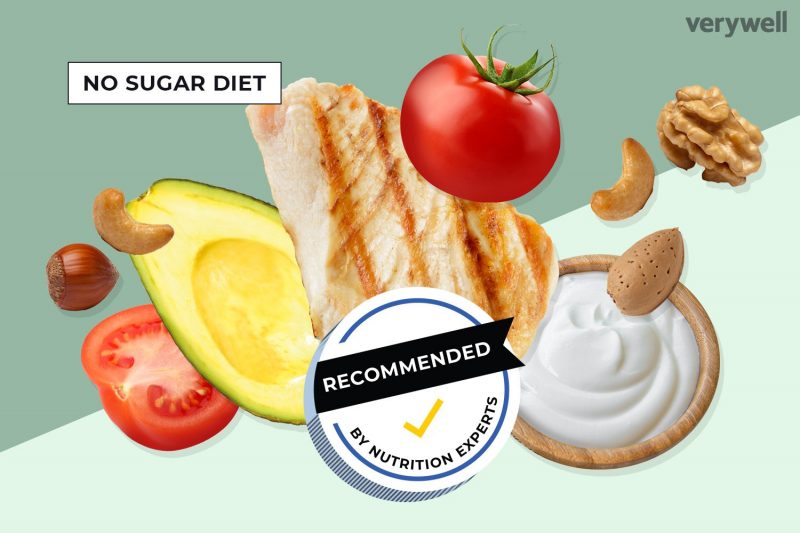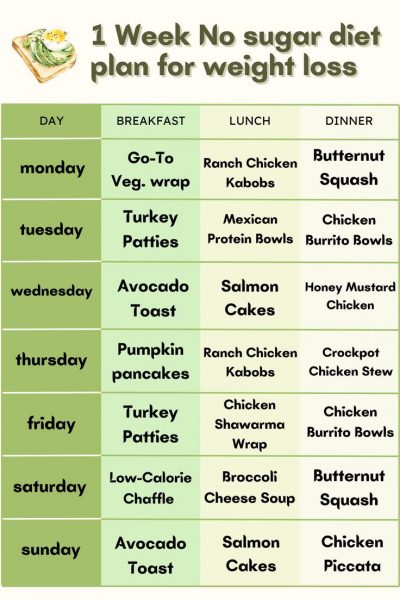No-Sugar Diet: Making a Plan to Eat Less Sugar

In recent years, the no-sugar diet has become a powerful approach to promoting healthier eating habits, weight management, and overall wellness. While it may sound challenging, reducing or eliminating sugar from our diets can yield substantial benefits, from increased energy levels to improved mental clarity. This article outlines effective strategies for embracing a no-sugar diet, covering what to avoid, what to include, and how to make the transition as smooth as possible.
Why Consider a No-Sugar Diet?
Excess sugar consumption is linked to several health issues, including obesity, heart disease, and Type 2 diabetes. Reducing sugar can help prevent these conditions and support sustained energy, better focus, and an improved mood. Additionally, removing or limiting sugar helps regulate blood sugar levels, avoiding the “crash” often experienced after consuming sugary foods.
What is a No-Sugar Diet?
A no-sugar diet involves reducing or completely eliminating added sugars and processed foods from our meals. While it doesn’t mean avoiding all carbs, the goal is to cut down on sugars that don’t provide nutritional value, often referred to as “empty calories.” Key to success is distinguishing between natural sugars found in fruits, vegetables, and dairy, and the processed sugars added to foods and beverages.
Health Benefits of a No-Sugar Diet
- Improved Heart Health: Reducing sugar intake can lower blood pressure and cholesterol levels, helping to protect the heart.
- Better Weight Management: Sugary foods and drinks are calorie-dense without providing essential nutrients, which can contribute to weight gain.
- Enhanced Mental Clarity and Focus: Sugar spikes and crashes can impact mental performance, so reducing sugar often leads to steadier energy levels.
- Improved Skin Health: Excessive sugar intake can exacerbate inflammation, often leading to skin issues such as acne and premature aging.
- Stable Energy Levels: When we consume less sugar, our bodies experience more consistent energy, without the spikes and crashes associated with sugary foods.
How to Start a No-Sugar Diet: Key Steps
1. Understand the Different Types of Sugars
- Added Sugars: Found in many processed foods and drinks, added sugars are the main target in a no-sugar diet.
- Natural Sugars: Present in whole foods like fruits and vegetables, these sugars come with fiber, vitamins, and minerals that support overall health.
2. Learn to Read Food Labels
One of the biggest challenges in reducing sugar is identifying hidden sugars in packaged foods. Look for terms like high fructose corn syrup, cane sugar, sucrose, fructose, and agave nectar on labels. Many seemingly healthy items, like yogurt, granola bars, and salad dressings, contain significant amounts of added sugar.
3. Gradually Reduce Sugar Intake
Abruptly cutting out sugar can lead to cravings and mood changes. Instead, gradually reduce sugar consumption to allow your body to adjust. For example, start by removing sugary drinks and snacks, and focus on substituting them with healthier options.
4. Replace Sugary Foods with Healthy Alternatives
- Opt for Whole Fruits: Berries, apples, and citrus fruits provide natural sweetness along with fiber and essential nutrients.
- Choose Nuts and Seeds: Almonds, walnuts, chia seeds, and sunflower seeds offer a satisfying crunch and healthy fats without added sugar.
- Incorporate Protein-Rich Foods: Foods like eggs, lean meats, tofu, and legumes help keep you full longer, reducing the urge to snack on sugary items.
5. Prepare Meals at Home
Cooking at home allows for complete control over the ingredients used. Many restaurant dishes and takeout options contain hidden sugars, so preparing meals in your kitchen helps avoid these added ingredients.
Managing Cravings on a No-Sugar Diet
1. Hydrate Regularly
Sometimes, dehydration can feel like hunger or sugar cravings. Aim to drink plenty of water throughout the day, and consider adding a slice of lemon or cucumber for flavor.
2. Eat Balanced Meals
Including protein, healthy fats, and fiber in each meal can help keep blood sugar levels stable and stave off sugar cravings. Consider meals like a salad with grilled chicken, avocado, and a mix of fresh veggies, or oatmeal topped with nuts and berries.
3. Get Enough Sleep
Poor sleep often increases cravings for sugary foods as the body seeks quick energy. Aim for 7-8 hours of quality sleep each night to reduce the urge to reach for sweet snacks.
The Role of Natural Sweeteners in a No-Sugar Diet
While the goal is to reduce or eliminate sugars, some natural sweeteners can serve as alternatives:
- Stevia: A plant-based sweetener with no calories, often used in teas and baked goods.
- Monk Fruit: Another zero-calorie option, offering sweetness without affecting blood sugar.
- Coconut Sugar: Though still a sugar, it has a lower glycemic index than regular sugar and contains trace nutrients.
It’s important to use these sweeteners sparingly, as even natural sweeteners can contribute to cravings for sweets.
Sample No-Sugar Meal Plan
Here’s a one-day meal plan to inspire your journey:
Breakfast
- Greek yogurt (unsweetened) with a handful of berries and chia seeds.
Lunch
- Quinoa salad with mixed greens, cherry tomatoes, cucumber, grilled chicken, and a drizzle of olive oil and lemon.
Snack
- Sliced apple with almond butter (unsweetened).
Dinner
- Stir-fried vegetables with tofu or lean beef, served with cauliflower rice or a small portion of brown rice.
Dessert
- Fresh strawberries or a small piece of dark chocolate (80% cocoa or higher).
Tips for Staying Motivated on a No-Sugar Diet
- Set Realistic Goals: Begin with achievable goals, such as limiting sugary beverages or reducing sugary snacks.
- Track Progress: Use a food journal or a health app to monitor sugar intake and celebrate small victories.
- Find Support: Partner with friends, family, or online communities to share recipes, tips, and encouragement.
- Be Kind to Yourself: Sugar cravings can be challenging to overcome. If you have a slip-up, treat it as a learning experience and continue moving forward.
Common Pitfalls and How to Avoid Them
1. Overconsuming Processed “Healthy” Foods
Some products labeled as “low fat” or “natural” can still contain added sugars. Always read labels carefully, even for products marketed as health foods.
2. Relying Too Much on Artificial Sweeteners
Although they don’t contain sugar, artificial sweeteners can sometimes lead to increased cravings and overeating. Use them sparingly, if at all.
3. Not Planning Ahead
A no-sugar diet can feel restrictive if we don’t plan ahead. Keep healthy snacks on hand, and prepare meals in advance to avoid reaching for sugary options when hunger strikes.
Long-Term Benefits of a No-Sugar Diet
By committing to a no-sugar diet, we support lasting health improvements, including better weight management, enhanced mood stability, and reduced risk of chronic diseases. The journey to reducing sugar may have its challenges, but the rewards are well worth the effort.








